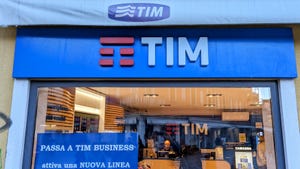Small telcos play key role in FTTH expansion in North America
The number of North American households hooked up to fibre-to-the-home (FTTH) networks has hit the nine million mark, with small incumbent telephone companies continuing to lead the growth in fibre to the home deployments, according to the FTTH Council Americas.
September 26, 2012

The number of North American households hooked up to fibre-to-the-home (FTTH) networks has hit the nine million mark, with small incumbent telephone companies continuing to lead the growth in fibre to the home deployments, according to the FTTH Council Americas.
The Council has announced new research findings which suggest that FTTH services are now available to 21.3 million North American homes, an increase of more than ten per cent over the past six months.
“While large providers such as Verizon in the US, Bell and Bell Aliant in Canada and Telmex in Mexico continue to be very important, small providers such as rural telcos, real estate developers, small competitive providers and even rural electric coops are playing a key role in driving the expansion of fibre-to-the-home,” said Michael Render, President of markets research firm RVA, which tracks FTTH deployment for the Council.
In its analysis, RVA found that all but eight of nearly 880 FTTH service providers surveyed have fewer than 30,000 subscribers, with only five having more than 50,000 access lines and 97 per cent of them having fewer than 10,000. The most notable of the big FTTH providers is Verizon, which serves more than half of the FTTH households in North America.
“In addition, other large providers are growing in importance,” added Render. “AT&T is increasing its deployment of FTTH in new developments, and the new Google Gigabit fibre deployment in Kansas City is now fully underway.”
FTTH speeds beginning to pull ahead
RVA found that there are now more than half a million households in North America receiving internet connectivity at or in excess of 100Mbps, and that tested throughput speeds among survey respondents found FTTH subscribers are beginning to pull away from other access technologies in both download and upload capacity.
Median tested download speeds were above 20Mbps for FTTH subscribers, compared to less than 15Mbps for cable modem users, while FTTH upload speeds were over 9Mbps compared to about 3Mbps for cable.
Mexico leading LatAm FTTH deployments
The FTTH Council Americas has also revealed that new research by French firm IDATE on emerging FTTH deployment in Latin America has found that all-fibre networks now pass 4.2 million homes in the region, with 350,000 homes connected.
Mexico was found to be the leading fibre-to-the-home market, followed by Brazil, with Chile and Argentina also showing some promise as deployments get underway in those countries.
“We found that the main fibre architecture being deployed in Latin America is FTTH, as opposed to fibre-to-the-building, and that GPON is the preferred technology – involving more than 80 per cent of the deployments in both cases,” said Roland Montagne, Director of the Telecoms Business Unit at IDATE.
About the Author
You May Also Like










.png?width=300&auto=webp&quality=80&disable=upscale)


_1.jpg?width=300&auto=webp&quality=80&disable=upscale)